Did a site visit for an 18month old building since exterior renders were done but 4 year old since masonry walling was done experiencing masonry wall cracks. The building sits on very hard rock, 1m below the ground. A year ago, the neighbour off gridline "F" starting excavation his basement, the excavation was 3m below this buildings foundation. Because of the impervious rock, water levels are very high, and now the neighbour has to constantly pump water out of his basement sumps.
The cracks appeared at the beginning of this year and grown in size until I was called for an opinion last week.
The structural layouts are thus,
Foundation layout
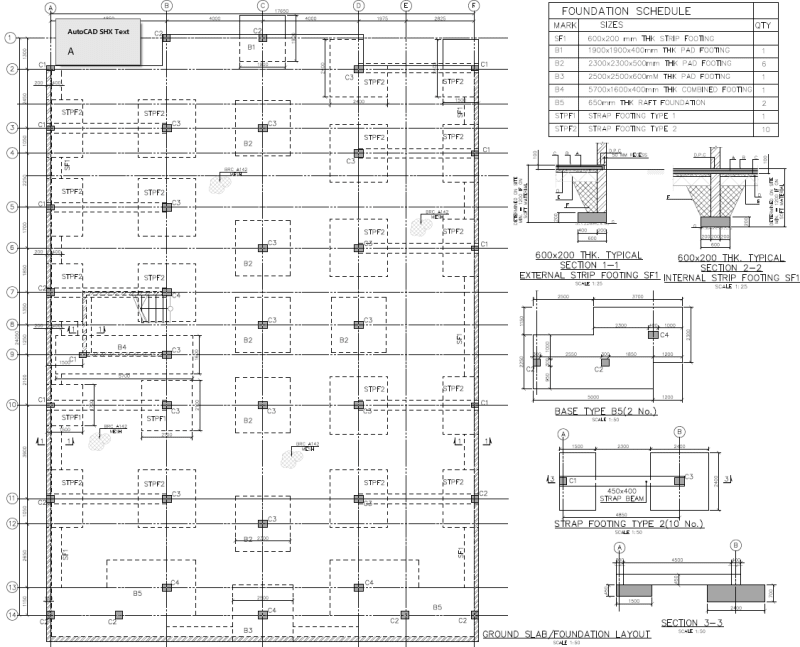
Typical floor layout
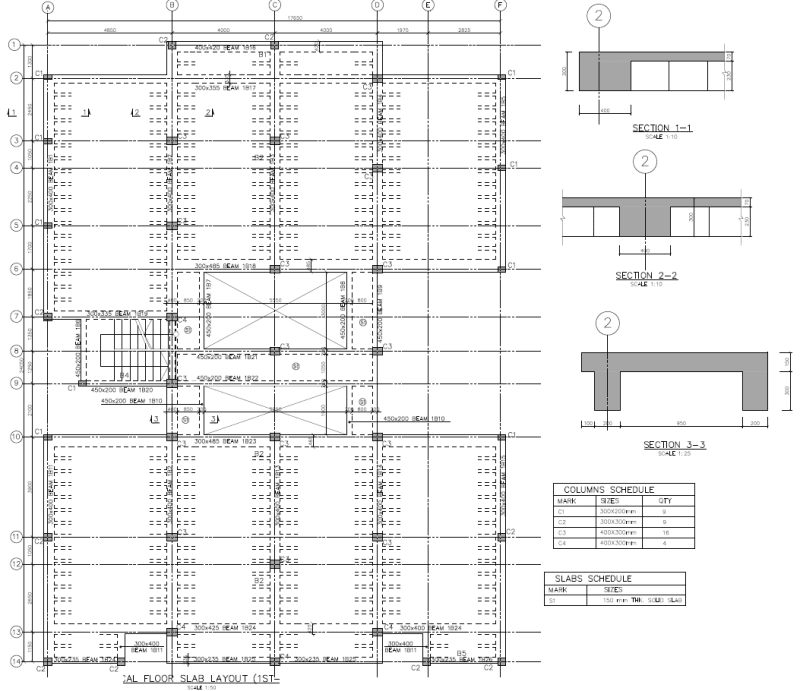
Pdf files that are clearer have also been uploaded
Cracks starting at window openings.
Cracks along Gridline "10 / D-F"
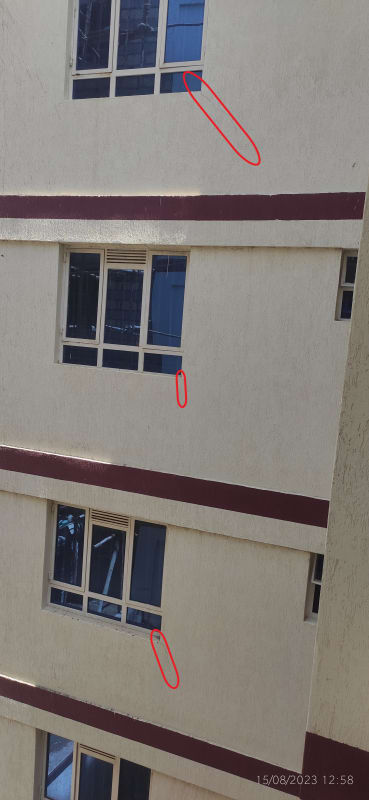
Cracks along Gridline "6 / D-F"
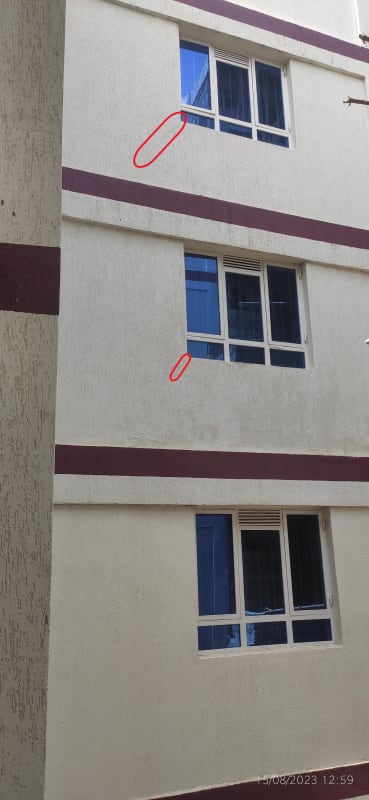
The cracks are wider at the window corner about 0.5mm tapering to 0 crack towards columns on gridline "D".
An analysis of the two strap beam tied foundation shows the two pad foundations along gridline "F" (ground bearing pressure 241KN/m2) are more heavily loaded than those on gridline "D" (ground bearing pressure 179KN/m2) due to the foundation sizes not being balanced as calculated from expected column loads. Tho. non of them are anywhere near the safe bearing capacity of the rock they sit on (approximately 400KN/m2)
Another crack occurs on the parapet wall above roof slab along gridline "10 / D-F". The parapet walls are 4 courses of natural stone block masonry sitting on the edge beam with a cast in situ top coping.
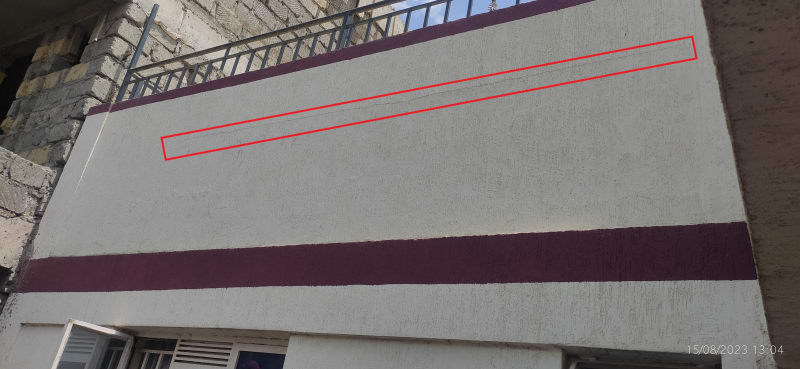
An analysis of the edge beam carrying the parapet wall shows its too stiff to suffer from deflection.
The window cracks are definitely differential settlement cracks, but the stiff underlying rock is giving me pause, could the excavation / draining water be a culprit or aggravate the issue?
The cracks appeared at the beginning of this year and grown in size until I was called for an opinion last week.
The structural layouts are thus,
Foundation layout

Typical floor layout

Pdf files that are clearer have also been uploaded
Cracks starting at window openings.
Cracks along Gridline "10 / D-F"

Cracks along Gridline "6 / D-F"

The cracks are wider at the window corner about 0.5mm tapering to 0 crack towards columns on gridline "D".
An analysis of the two strap beam tied foundation shows the two pad foundations along gridline "F" (ground bearing pressure 241KN/m2) are more heavily loaded than those on gridline "D" (ground bearing pressure 179KN/m2) due to the foundation sizes not being balanced as calculated from expected column loads. Tho. non of them are anywhere near the safe bearing capacity of the rock they sit on (approximately 400KN/m2)
Another crack occurs on the parapet wall above roof slab along gridline "10 / D-F". The parapet walls are 4 courses of natural stone block masonry sitting on the edge beam with a cast in situ top coping.

An analysis of the edge beam carrying the parapet wall shows its too stiff to suffer from deflection.
The window cracks are definitely differential settlement cracks, but the stiff underlying rock is giving me pause, could the excavation / draining water be a culprit or aggravate the issue?
